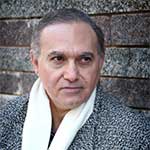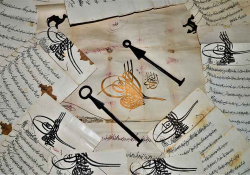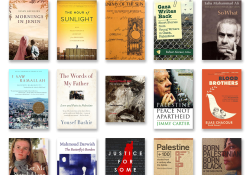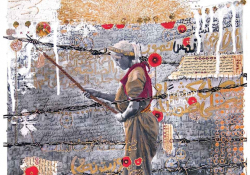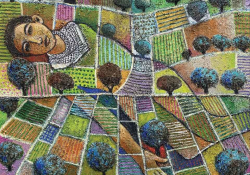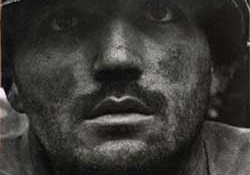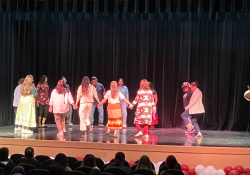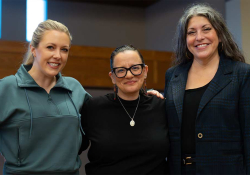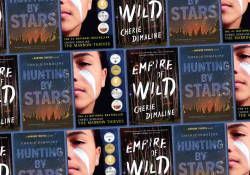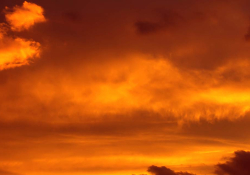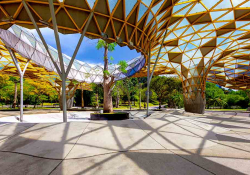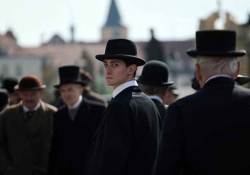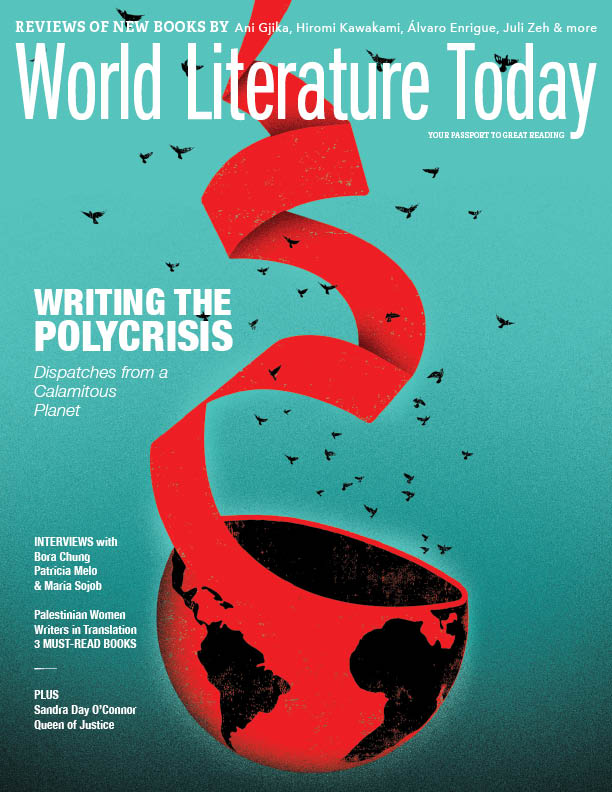Queen of Justice: A Portrait of Sandra Day O’Connor
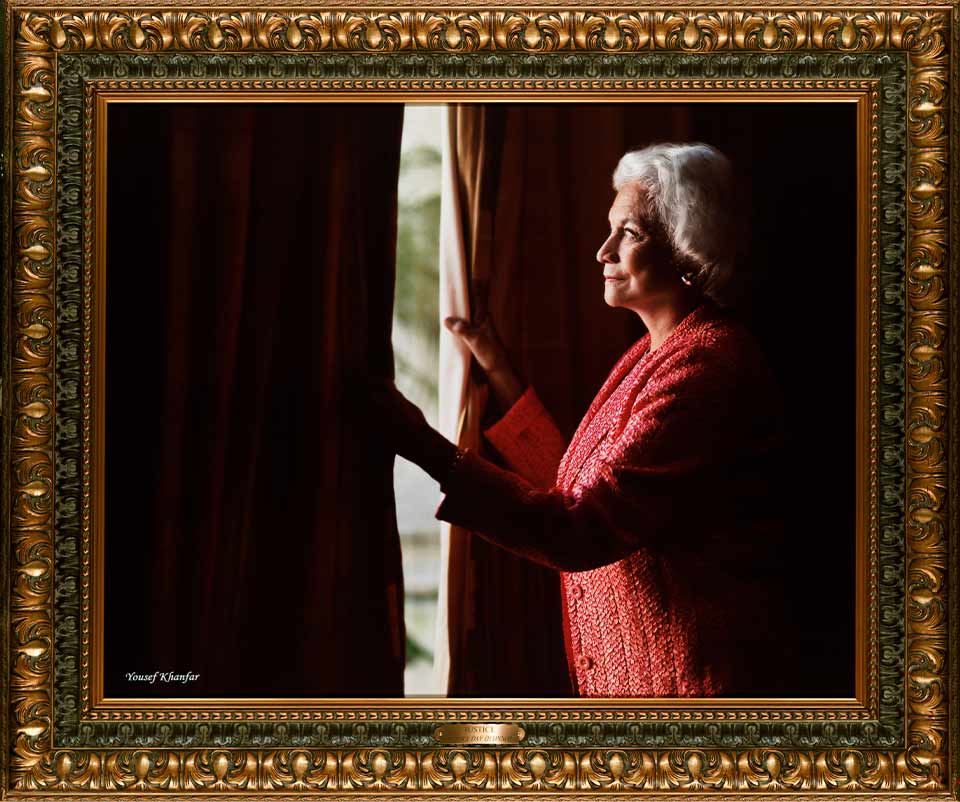
Photographer Yousef Khanfar recalls his time with Justice Sandra Day O’Connor in this tribute to the first female justice of the United States Supreme Court.
I was fortunate to fall into the orbit of Justice Sandra Day O’Connor, whom I call the Queen of Justice. The first woman justice to serve in the United States Supreme Court, she passed away on December 1, 2023, at the age of ninety-three.
In my lifelong search for peace and humanity, I also seek to promote justice. As a photographer, I speak with my eyes, and images are my messages. I wanted to capture a portrait of justice, so I chose Justice O’Connor, for she symbolizes the summit of justice. I called on my dear friend Robert Henry, former chief judge of the Tenth Circuit Court of Appeals, a Renaissance man who had a close relationship with her and arranged the meeting.
I wanted to capture a portrait of justice, so I chose Justice O’Connor, for she symbolizes the summit of justice.
Initially, her staff gave me only fifteen to twenty minutes. I told Judge Henry, I can’t even say good morning in fifteen minutes. I said, I am not interested in taking a photograph, I want to create a masterpiece. And with his shrewd diplomacy, I was granted much more time.
On May 18, 2009, I traveled from New York with my assistants to Washington, DC. The next day, in the US Supreme Court, we went through a great number of security checkpoints since I brought many boxes of photography equipment. Finally, I arrived at Justice O’Connor’s office and met her secretary, Linda Neary, who welcomed me and called her out of a meeting.
Justice O’Connor came out of the meeting with her beautiful smile and deep blue eyes. With her delicate hands, she held both of my hands and mentioned that she was in a meeting with delegates from overseas and would be done by early afternoon. She also assigned a young woman to give me a tour of the Supreme Court. Then I gifted her my book, In Search of Peace, and a red silk scarf. From the first impression, she gave me great comfort. She was welcoming, warm, and engaging.
In the afternoon, it was time for the photo session. Justice O’Connor came to a vast conference room that I preferred, which had long, royal curtains at the windows. She was accompanied by some of her staff and a security guard. I was a bit nervous to have so many eyes on what I was doing. After all, she was one of the most powerful women in US history.
She stood before me and said, I am ready. I replied, I am going to dim the lights to near darkness. At that moment there was an audible sigh from the staff and security. She stepped close to me and softly said, Don’t worry, tell me what to do and I will do it. She stepped back and then, without any hesitation, came back again and softly said, You know, I never said that to any man. We both laughed, and at that moment I began to know this grand lady on a human scale. She made me feel less nervous with her smile and beautiful sense of humor. So, I asked her to stand in front of the curtains, open them slightly, gaze outside, and think of America. She did, and I captured her iconic portrait.
The symbolism of Justice O’Connor’s portrait has many dimensions. One, opening the curtains, which means that, since she was the first female justice, she opened the door to the female justices who followed her. Second, the portrait cast a pool of light into the mysterious place we call the Supreme Court. Third, one can see her keen gaze into the future reflecting on America and the American people.

Since she wrote many books and was often the court’s swing vote, and her dissenting opinions frequently made history, I wanted to capture a portrait of her hands. I asked her, What is the most important thing to you? She said, My family, my home. So, I drew a home and sunshine, then captured a portrait of her hands. As I reflect on that portrait, I can see there is still a young girl with dreams in those wise hands.
When we finished, we visited for a while in her office, and she was interested to learn more about my background. Then she said, I want to show you something. She opened a cabinet door and pulled out a little statue and said, Since you took the photo of my hands, I want to show you a cast replica of President Abraham Lincoln’s hands. The cast, made by artist Leonard Volk in 1860, was beautiful. She thought it was magnificent that a cast of the president’s hands had been preserved.
While in her office, I asked, Why do you think President Reagan selected you? She mentioned that they both came from ranching backgrounds. He knew that ranch life is hard work and requires hard-working people who get up early in the morning and get things done. In the White House, she added, they didn’t talk much about laws, but they talked about ranching, horseback riding, mending fences, open space, and the ranching life. He knew, growing up on a ranch, that you have to be independent and have to make your own decisions.
At the end of the year, on December 31, 2009, in the early afternoon, it was time for the celebration of the new O’Connor House. Judge Henry, his wife Jan, many friends, and I accompanied her. The house was dedicated as a place “where civil talk leads to civic action,” due in large part to the family life and days when Justice O’Connor was in the Arizona Senate. In those days the justice would gather friends and colleagues from both aisles of the senate to have discussions in a friendly manner in order to make decisions that would best serve the interests of family, community, and state.
However, what was most fascinating is that the new O’Connor House was actually her original home, which was built in the 1950s as an adobe home with hand-formed bricks by the justice and Mr. O’Connor using mud from the Salt River. After many challenges and fundraising obstacles, her original home was miraculously disassembled and moved, brick by adobe brick, from its original location at Denton Lane in Paradise Valley to Tempe’s Papago Park on the Arizona Heritage Center campus.
At the O’Connor House, Justice O’Connor regularly presided over meetings of the board of directors, which is symbolic of civil discourse and consensus-building. It is that spirit of civil, civic engagement that inspired the mission of the Sandra Day O’Connor Institute for American Democracy (oconnorinstitute.org). She championed the idea of iCivics to teach the new generation about the different US government branches. She built a website and promoted the idea in many of her speeches. Today the O’Connor Institute is under the leadership of another trailblazer, Sarah E. Suggs, its president and chief executive officer.
On that day, Justice O’Connor was so excited and full of energy. She showed us the house and told us its history. While she was socializing and having a pleasant time with friends, she took a sip from her glass of champagne, raised it up to me, and asked me to sample it. Everyone was watching, and Judge Henry was intrigued because he knew I am Muslim. She said, Try this—it is delicious. With her smile and a twinkle in her eyes, I couldn’t resist. This would be my first taste of champagne. She noticed her lipstick at the edge of the champagne glass and swiftly turned it around. Then I took a sip from that small oasis.
Afterward we went to her charming suburban home. After some time spent visiting, as I was going through her bookshelves, I asked, What kind of books do you like to read? She said, I like nonfiction books, some on politics, and sometimes others. I asked, Do you read novels? She said, I enjoy the ones with a historical story. Her bookshelves were crowded with bright minds, the ones that elevate your knowledge.
In her house, you can feel the ambience of love. I needed to use the bathroom, so she told me where to go. In her bathroom, she had a framed quote hanging on the wall that says, Good lawyers know the law; excellent lawyers know the judge. I thought that was brilliant and emblematic of her endless spirit and sense of humor.
On the same day in the evening, it was time to unveil her portrait. We all met at the house of Judge Henry’s cousin, David Stoll, and his wife, Gena. Judge Henry played the piano, Jan sang with him, and David played the guitar. Then came the time to unveil the portrait. She walked toward the veiled portrait with Jan Henry and said, Before you unveil the portrait, I want to tell you something. I said, Yes, please. She said, Some days I spend the morning with you. I was curious, so I said, How is that? She said, Some days I get my cup of coffee and sit down at the table and immerse myself in the photographs of your book (In Search of Peace). And Jan Henry said, You can’t get a better compliment than that.
While I was nervous, Justice O’Connor and others stood in front of the veiled portrait. I unveiled her portrait, and she immediately put her hand over her lips. She was very moved and so delighted that one could see it in her eyes. She was so excited that she called one of her sons to come and see the portrait. I remember her excitement vividly. And in one of her letters to Judge Henry, she wrote, One member of our team actually burst into tears on seeing it because she was so overcome with its effect. The next week I received a letter from her mentioning that the portrait would hang permanently in the O’Connor House. At that moment, I was the happiest kid in the Zodiac.
Justice O’Connor mentioned that the poor and the rich, white and Black, strong and weak, they all must follow the law.
Over dinner that evening, I sat down next to her and we visited about many different subjects. Then I asked, What is justice to you? She put her fork down and said, Honey, there is no justice, there are only laws. She mentioned that the poor and the rich, white and Black, strong and weak, they all must follow the law. There is something beautiful about that. Throughout the years, I thought about that statement many times while I was working on my social project and book Invisible Eve.
In subsequent years, we met again and had wonderful conversations. On one occasion, we talked about writing. I asked her about the difference between writing for the law versus writing books. She mentioned that writing for the law was a heavy burden because every word must stand on its own. She added that, writing books, it is also important to choose the right language. Writing for the law, she added, her focus is on the law and the American people. Writing books, her focus is on the subject and readers. The former is mostly black and white, where the latter can have more shades of gray.
Justice O’Connor wrote many books, including books for children. In her book Lazy B, Justice O’Connor tells, with her brother, Alan, the story of the Day family and of growing up on the harsh yet beautiful land of the Lazy B Ranch in Arizona. Laced throughout these stories about three generations of the Day family, and everyday life on the Lazy B, are the lessons Sandra and Alan learned about the world, self-reliance, and survival, and how the land, people, and values of the Lazy B shaped them.
Her book Out of Order sheds light on the centuries of change and upheaval that transformed the Supreme Court from its uncertain beginnings into the remarkable institution that thrives and endures today. Justice O’Connor weaves together stories and lessons from the history of the court, charting turning points and pivotal moments that have helped define our nation’s progress.
Another book she authored, The Majesty of the Law, explores the law, her life as a Supreme Court justice, and traces some of the origins of American law through history, people, ideas, and landmark cases. O’Connor sheds new light on the basics, exploring through personal observation the evolution of the court and American democratic traditions.
She also wrote another book for children, Finding Susie. Young Sandra grows up on a desert ranch surrounded by animals, but she wants to have one as her very own pet. A tortoise isn’t really friendly, a little rabbit is too fearful, and a young coyote howls to rejoin his pack. A bobcat almost fits the bill but soon grows too big and fierce to be a house cat. Sandra’s parents let her learn for herself that these animals are best suited to the wild, though it is often hard to let them go. Finally, a smiling little stray dog finds Sandra. Sandra names the dog Susie, and the two become wonderful friends.
From Austin High School in El Paso, Texas, to the US Supreme Court in Washington, DC. From working pro bono as a lawyer in her first job at the San Mateo County attorney’s office in California to the highest court of the land. At every step Justice O’Connor inspired generations of people, not only in America but around the world. Her leadership embodied greatness, many times under tremendous pressure and scrutiny. And she often mentioned, It is thrilling to be the first woman to serve in the Supreme Court, but it would be dreadful if you were the last.
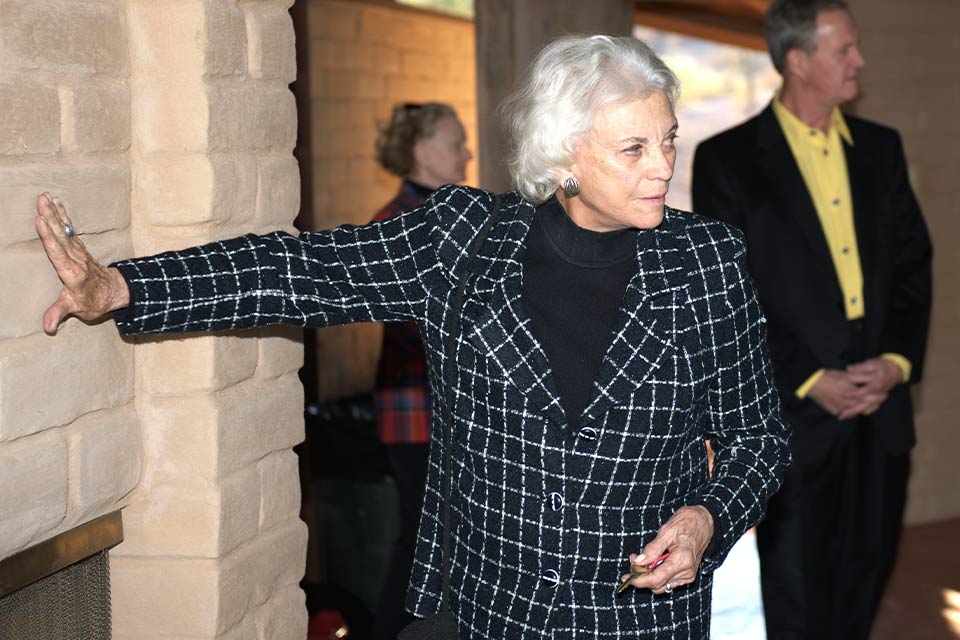
Justice O’Connor believed the law should be a stabilizing force for America, the American people, and the world.
To her, the US Supreme Court is the bedrock of America. She believed in the importance of diversity, multiracial democracy, women’s rights, human rights, and the like. She did not believe in imposing an overarching ideology but in more of a practical, bottom-up philosophy. She was hesitant to overturn precedents but took more of an incremental approach, which is more appealing as a constitutional vision. She believed the law should be a stabilizing force for America, the American people, and the world.
At the end of Justice O’Connor’s life journey, as her son Scott said at the funeral service and celebration of his mother’s life, Her ashes will be buried alongside John O’Connor’s on a remote mountaintop at the Lazy B Ranch.
In the end, she rests in peace in Arizona, the Grand Canyon State and the land she loved the most, about which she said:
Whenever I am away from Arizona, I miss the sense of vast space and distance, the cumulus clouds floating across the bluest of skies, the presence of a horizon, and the dry desert wind. All these things remind me how great is our universe and how small we are—that self-reliance is important in this enormous world of ours.
And now, to you, Justice Sandra Day O’Connor, chosen from among the many, whose life refuses summation and invites contemplation, thank you for being our queen, thank you for being our royalty around the world, maybe not by bloodline, but by your wisdom, elegance, and leadership. You gifted us with your crown: you crowned us.
